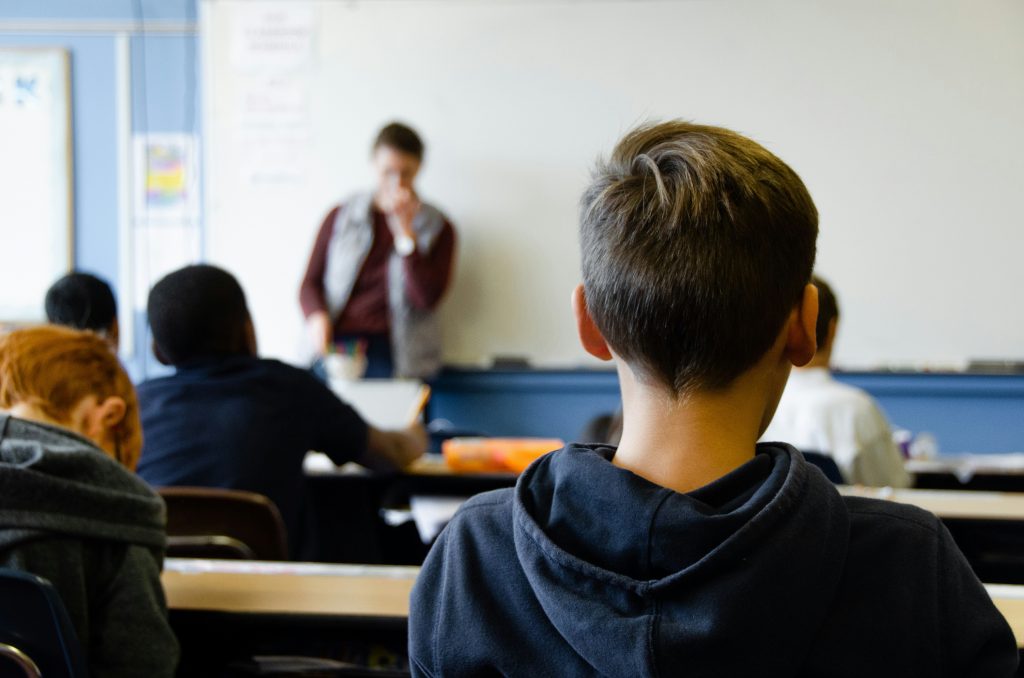Educators discuss solutions for students struggling with poverty
Educators discuss solutions for students struggling with poverty
Organizations like Kids in Need and Teach for America provide K-12 schools with resources and support for students and educators.

Lacking pencils and notebooks is a significant aspect of how poverty can affect a student, but far from the core of the problem. Students from low-income homes can experience poor living conditions, and the adverse effects of those conditions bleed into their education.
Susan Orecki, a guidance counselor with extensive experience assisting students facing poverty, shared a few factors that students often struggle with at home that can impact their educational experience.
“They don’t get enough sleep,” Orecki said. She shared that some children go to bed hungry and live in homes without heat, which makes it difficult to get quality rest. Lack of sleep can impact students’ ability to focus and be present in class.
Home lives can also affect a student’s ability to complete assignments. Some kids are busy babysitting their siblings while their parents work extra shifts.
“These students are the only ones that come in without their homework done,” Orecki added. “I think that bothers them and pulls down their confidence.”
Josh Schaefer, an educator for Teach for America, has worked with students in similar situations. “I remember one particularly bright student who would take a train after school, work a six hour shift, then commute back,” Schaefer explained.
“If he had the time to focus on his classes there is no doubt he would be at the top of his class. Instead, he was barely passing and in danger of not graduating.”
Dr. Kesley Ramsey, a child clinical psychologist at Johns Hopkins School of Medicine, explained these factors fall under the category of Adverse Childhood Experiences.
“Experiencing ACEs growing up can increase the risk of mental health problems down the road,” Ramsey said. She explained further that ACEs are “potentially traumatic experiences.”
In addition to the circumstances that some students face, they also have to learn how to advocate for themselves. “If students don’t have hats for recess or sneakers for gym, they need to go to the nurse and ask for what they need or they cannot participate,” Orecki explained.
Ramsey acknowledged that “speaking up and asking for resources can be a challenge for kids who may have social comparison and feel self-conscious.”
Orecki expressed a similar sentiment, adding that self-comparison weighs heavily on the students. “They start visiting other houses and start to realize that they are in the have-not category and not the have,” Orecki said. “That’s hard for them, they don’t want anyone to know where they live.”
There are a myriad of ways to help students in these types of situations. Wheeler Elementary School has a protocol for students facing adversity. “Normally, they come to my office and we come up with a plan,” Orecki said. She then arranges for a private meeting with the student and teacher to come up with solutions.
“Most kids who are really in trouble don’t share a lot,” Orecki said. Teachers know that the school is a safe and comfortable space for many students. One solution many teachers employ is allowing students extra work time in the classroom.
Orecki described some students in survival mode, where “they just need to get to school where there is heat so they can take a nap.”
Wheeler Elementary benefits from a strong parent-teacher organization, which provides resources like sneakers and jackets for students in need. The school also offers free and reduced lunch. Plus, at the beginning of the year, the teachers pool their money together to cover extra supplies.
Though pooling salary money seems to work for Wheeler Elementary, on a global scale, many schools cannot afford to support students this way. That’s where the Kids in Need Foundation intervenes.
The Kids in Need Foundation was founded by a group of men who worked for a school supplies company. They did not know what to do with the supplies that were discontinued or had damaged packaging and wanted to serve kids who were under-resourced.
Now, the foundation provides millions of dollars of supplies to schools across the country. Lindsey Mitchell, director of brand engagement at the foundation discussed how the program helps kids, by helping teachers. According to Mitchell, some teachers spend up to two thousand dollars a year just on supplies.
Kids in Need surveyed teachers who received supplies and 66% reported that materials led to increased participation and engagement in classrooms.
While supplies are not the end-all-be-all solution for children struggling with poverty, Mitchell says adequate resources are the first step. “If classrooms are equitable in terms of the tools and supplies, that gets them started in the right direction. It’s a good start.”
“The sad reality is there is a lot that teachers can do to extend support to these students,” Schaefer added. “But ultimately, a lot of times, it is not enough.”
